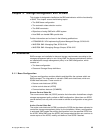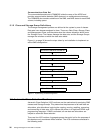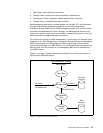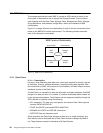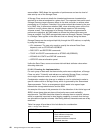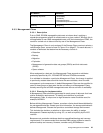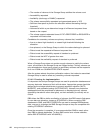
Storage Management with DFSMS 43
5.3.4 Storage Group
5.3.4.1 Description
Prior to SMS, disk storage was maintained as individual volumes, requiring
manual intervention to prevent volumes from filling up, and to prevent I/O
bottlenecks. SMS significantly improves the management of disk by building on
DFHSM capabilities to pool volumes together in Storage Groups.
A Storage Group is a pool of disk volumes upon which SMS managed data sets
are placed. These groups are normally transparent to users. A data set is placed
on an appropriate volume within a Storage Group depending upon the Storage
Class, volume, Storage Group status, and available free space. New data set
allocations can be directed to as many as 15 Storage Groups, although only one
Storage Group is finally selected.
Each Storage Group has attributes which determine a range of characteristics for
the volumes in that group. This includes backup, migration, and space
thresholds.
A volume can belong to one of the following main Storage Group types; POOL,
DUMMY or VIO. Three other types also exist; OBJECT, OBJECT BACKUP and
TAPE, although these are not as commonly used.
Storage Groups:
• Cannot share a volume.
• Cannot share data sets.
• Must contain whole volumes.
• Must contain volumes of the same device geometry.
• Can contain multi-volume data sets.
• Must contain a VTOC and a VVDS.
SMS selects the volumes used for data set allocation by building a list of all
volumes from the Storage Groups assigned by the ACS routine. Volumes are
then either removed from further consideration or flagged as primary, secondary,
or tertiary volumes.
Primary volumes meet the following criteria:
• SMS Storage Group and volume status of ENABLED
• MVS volume status of ONLINE
• Requested initial access response time (IART)
Backup -Who can back up the data (the storage administrator
or the user, or both).
- If automatic backup should be taken for a data set.
- Backup frequency (number of days between
backups).
- Number of backup versions (data set exists).
- Number of backup versions (data set deleted).
- Retention of backups once a data set has been
deleted.
- Backup copy type (incremental, full volume dump).
ATTRIBUTE COMMENT



